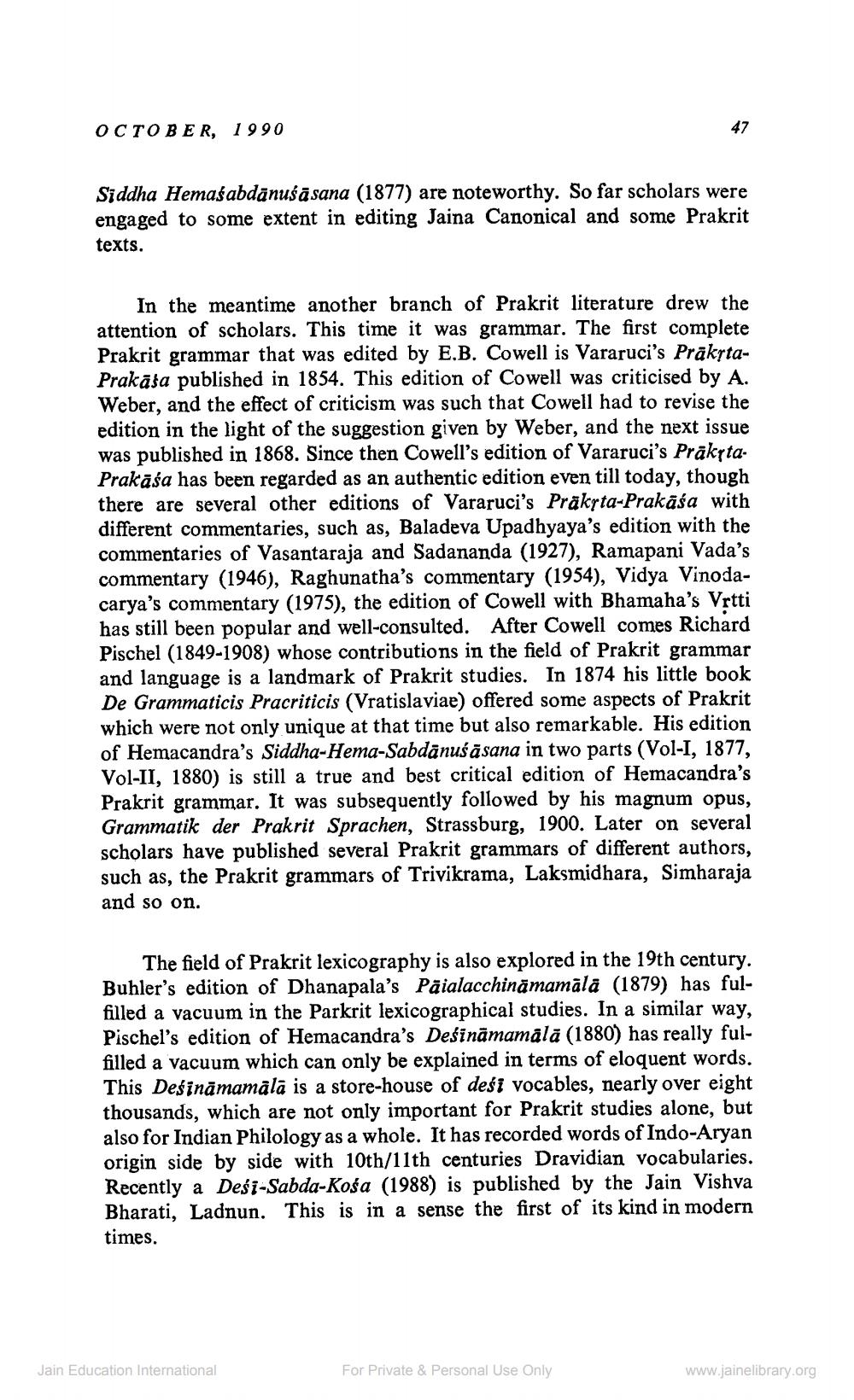________________
OCTOBER, 1990
Siddha Hemaśabdānuśāsana (1877) are noteworthy. So far scholars were engaged to some extent in editing Jaina Canonical and some Prakrit texts.
In the meantime another branch of Prakrit literature drew the attention of scholars. This time it was grammar. The first complete Prakrit grammar that was edited by E.B. Cowell is Vararuci's PrākrtaPrakasa published in 1854. This edition of Cowell was criticised by A. Weber, and the effect of criticism was such that Cowell had to revise the edition in the light of the suggestion given by Weber, and the next issue was published in 1868. Since then Cowell's edition of Vararuci's Prākyta. Prakāśa has been regarded as an authentic edition even till today, though there are several other editions of Vararuci's Prakrta-Prakāśa with different commentaries, such as, Baladeva Upadhyaya's edition with the commentaries of Vasantaraja and Sadananda (1927), Ramapani Vada's commentary (1946), Raghunatha's commentary (1954), Vidya Vinodacarya's commentary (1975), the edition of Cowell with Bhamaha's Vrtti has still been popular and well-consulted. After Cowell comes Richard Pischel (1849-1908) whose contributions in the field of Prakrit grammar and language is a landmark of Prakrit studies. In 1874 his little book De Grammaticis Pracriticis (Vratislaviae) offered some aspects of Prakrit which were not only unique at that time but also remarkable. His edition of Hemacandra's Siddha-Hema-Sabdanuśāsana in two parts (Vol-I, 1877, Vol-II, 1880) is still a true and best critical edition of Hemacandra's Prakrit grammar. It was subsequently followed by his magnum opus, Grammatik der Prakrit Sprachen, Strassburg, 1900. Later on several scholars have published several Prakrit grammars of different authors, such as, the Prakrit grammars of Trivikrama, Laksmidhara, Simharaja and so on.
The field of Prakrit lexicography is also explored in the 19th century. Buhler's edition of Dhanapala's Pāialacchināmamālā (1879) has fulfilled a vacuum in the Parkrit lexicographical studies. In a similar way, Pischel's edition of Hemacandra's Deśināmamalā (1880) has really fulfilled a vacuum which can only be explained in terms of eloquent words. This Deśināmamālā is a store-house of deši vocables, nearly over eight thousands, which are not only important for Prakrit studies alone, but also for Indian Philology as a whole. It has recorded words of Indo-Aryan origin side by side with 10th/11th centuries Dravidian vocabularies. Recently a Desi-Sabda-Kośa (1988) is published by the Jain Vishva Bharati, Ladnun. This is in a sense the first of its kind in modern times.
Jain Education International
For Private & Personal Use Only
www.jainelibrary.org




